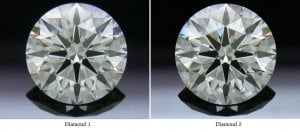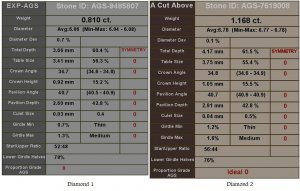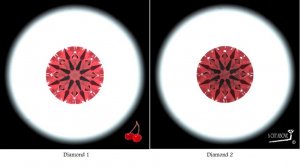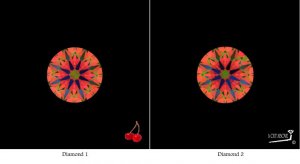Dreamer_D
Super_Ideal_Rock
- Joined
- Dec 16, 2007
- Messages
- 29,389
I recently traded in a .80ct ES diamond from WF for a 1.17ct ACA. Both have ideal numbers based on the HCA and check out as great diamonds using our PS standards.
However, I notice that my ACA has *much* more fire than my previous diamond, and also more spectral color scintillation (is this the right term? The scintillation has more rainbow colors). Overall, my present diamond has more personality.
I very much prefer the performance of my present diamond to my previous, and I am wondering what features of my ACA's cut are making it perform differently than my previous diamond? If you can point out aspects of the cut parameters or evidence from the IS images or ASET images, that would be really great.
I am wondering for educational purposes, but also because I will be upgrading again in the future and would like to get a diamond that performs like my present diamond.
Below is all the information about the two diamonds. Diamond 1 is the .80ct ES and Diamond 2 is the 1.17ct ACA.
Magnified image...

However, I notice that my ACA has *much* more fire than my previous diamond, and also more spectral color scintillation (is this the right term? The scintillation has more rainbow colors). Overall, my present diamond has more personality.
I very much prefer the performance of my present diamond to my previous, and I am wondering what features of my ACA's cut are making it perform differently than my previous diamond? If you can point out aspects of the cut parameters or evidence from the IS images or ASET images, that would be really great.
I am wondering for educational purposes, but also because I will be upgrading again in the future and would like to get a diamond that performs like my present diamond.
Below is all the information about the two diamonds. Diamond 1 is the .80ct ES and Diamond 2 is the 1.17ct ACA.
Magnified image...














300x240.png)